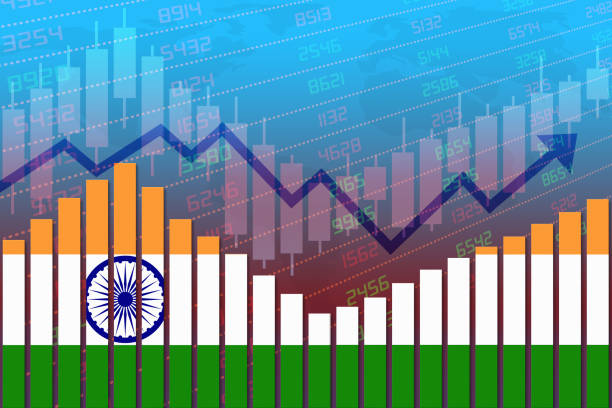11 Mar , 2024 By : Debdeep Gupta

Indian equity market valuation highest in the world after the US and Japan, Indian equity market's valuation for FY 24 is at a forward price-to-earnings ratio of 18.1. Analysts are concerned as they believe that markets are in expensive territory with Q3 fundamentals not supporting the growth.
Indian benchmark indices are currently on a strong bull run, with the Nifty 50 reaching new highs for the fourth consecutive week. On March 7, the Nifty touched a new all-time high of Rs 22,525. However, with the rising market and the ongoing anticipated pre-election rally, valuations continue to be a concern for investors.
The valuation of the Indian equity market is the highest in the world after the US and Japan. Analysts express concern that the markets are in an expensive territory, citing Q3 fundamentals that do not support the observed growth.
Nifty50 price-earnings ratio at 18.1, after US's Nasdaq, S&P 500, and Japan's Nikkei| Source: SBI Securities research
The Nifty50 is currently trading at a forward price-to-earnings ratio of 18.1 times for FY 24, surpassing its long-term average band of 15-17 times. US and Japan have the highest relative valuation with Nasdaq and Nikkei trading at an FY 24 price-to-earnings ratio of 30.7 and 20.4 respectively. As per Rahul Arora, CEO of Nirmal Bang Institutional Equities, the fundamentals are not entirely backing the drive in valuations. “From the lows of Covid of 7,500 on the Nifty to then consolidating towards 18,500 to now at 22,000. It continues to be a liquidity-driven rally and that isn’t going to change in the immediate future. There are certainly some excesses in some parts of the market, as of late, even the regulator has noted. Inherently, markets need earnings to drive prices. For example, Nvidia whose stock price has been on an upsurge, its forward price to earnings is at 27 times and the stock price and its earnings are somewhat moving in tandem. Dixon Technologies had seen something similar in India not too long back where stock price moves were supported by earnings. But, in many parts, the prices have moved beyond rational expectations".
Liquidity driving valuations higher
Arora highlights that the the size of the mutual fund industry in India in 2016 was about Rs 5 lakh crore and that has swiftly become almost Rs 55 lakh crore-60 lakh crore in a matter of eight years. “If equity is 25-30 lakh crore of this and funds hold about three percent cash, the kind of dry powder is astounding. The era of 40-50 percent correction in stocks is long gone. Liquidity in markets is so high that even small corrections in stocks are being aggressively bought into. Going ahead, this year with elections, this momentum will likely continue, with some pause expected mid - later part of the year, but regardless, for now, liquidity in markets will continue to drive valuations,” he says.
“The Indian equity market is trading at a relatively premium valuation to its global peers like the MSCI emerging market, FTSE, CAC, DAX, and Taiwan, etc. However, we believe that India will continue to command a premium valuation due to relatively higher earnings growth (16.2 percent CAGR over FY23-25E), robust GDP growth outlook, political stability, and continuity in policies and reforms, " said Sunny Agrawal, Head of Fundamental Research at SBI Securities.
Going ahead, SBI Securities highlights some key risks to this high growth; events such as the general election results, the US fed rate trajectory, and geo-political tensions:
General elections results
With favorable state election outcomes and a balanced interim budget for 2024-25, attention has shifted to the outcome of the General Elections scheduled to be held in April - May 2024. The imposition of the code of conduct from the date of announcement of the election schedule up to the completion of the final phase of voting is expected to slow down the execution of infrastructure projects which have been driving the economy over the last few quarters. No fresh projects will be awarded by the Government and the PSUs during the code of conduct period.
US fed rate trajectory
While the Fed has indicated that it is done with rate hikes for now, the US economy continues to stay resilient. The inflation data, job environment, and bond yields suggest rate cuts are still away from reality at least for the next 4-6 months. The extent of the rate cuts (75 bps factored by the market in 2024) will be reduced if the US economy continues to perform well and inflation remains sticky.
Geopolitical tensions
The ongoing conflict in West Asia is expected to escalate further. The Red Sea crisis has disrupted shipping operations with consignments taking a longer time for delivery. Freight costs too have escalated, resulting in delayed exports from India as well as threatening India’s energy security. Cheaper Russian crude oil that Indian refiners were sourcing has turned expensive following the rise in shipping and insurance costs through the conflict-ridden Red Sea channel.
0 Comment